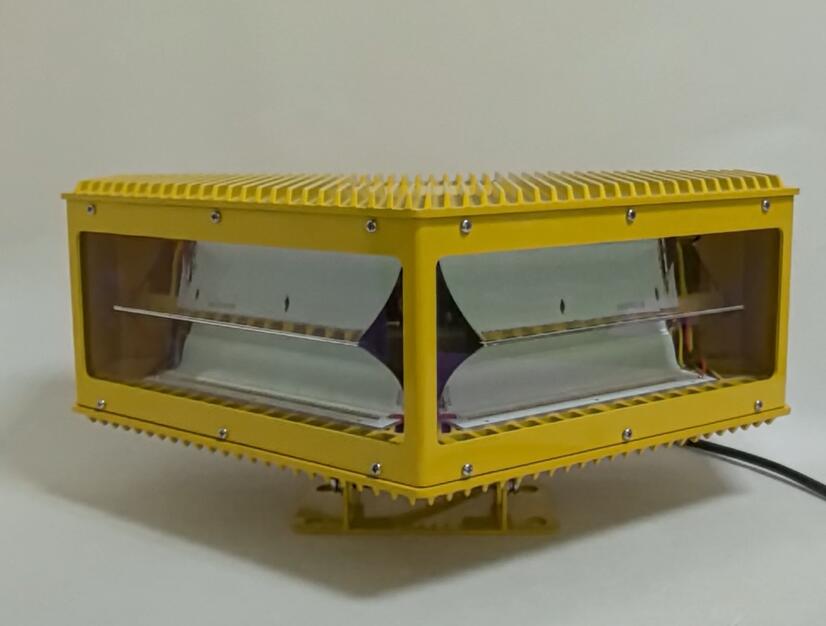Aviation Light for Chimney: Enhancing Safety and Compliance
Aviation light for chimney structures plays a critical role in ensuring air traffic safety while meeting regulatory compliance. Chimneys, especially those associated with industrial operations, often extend high into the atmosphere, creating potential obstacles for low-flying aircraft. Installing aviation lighting on these structures is a mandatory measure that combines safety, functionality, and legal adherence. This article explores the purpose, types, installation considerations, and benefits of aviation lights for chimneys, providing valuable insights into their application and significance.
Why Aviation Light for Chimney Structures Is Essential
Chimneys, whether in urban or remote industrial zones, can pose serious risks to aviation. Their height and location can interfere with the flight paths of both commercial and private aircraft. International regulations, such as those outlined by the International Civil Aviation Organization (ICAO) and the Federal Aviation Administration (FAA), require prominent structures like chimneys to be equipped with aviation lights to ensure they are visible to pilots, particularly during nighttime or adverse weather conditions.
Aviation lights for chimneys serve several purposes:
Prevention of Collisions: The lights make the chimney visible to pilots, preventing potential mid-air collisions.

Regulatory Compliance: Failure to equip chimneys with appropriate aviation lights can lead to legal penalties and operational disruptions.
Operational Safety: The presence of aviation lights enhances the safety of nearby airports and flight routes.
Types of Aviation Lights for Chimney Applications
The type of aviation light for chimney structures depends on the height of the chimney and the regulatory requirements in the region. Below are the primary types used:
Low-Intensity Lights:
Designed for chimneys with heights less than 45 meters.
Emit steady red light with a moderate intensity, ensuring visibility in both day and night conditions.
Medium-Intensity Lights:
Suitable for chimneys between 45 and 150 meters tall.
| Aviation lights for chimneys | GY78 |
Available in both white and red options, with white lights typically flashing during the day and red lights used at night.
These lights are energy-efficient and durable, making them ideal for medium-height structures.
High-Intensity Lights:
Required for chimneys exceeding 150 meters in height.
Produce high-lumen output, often in flashing white patterns during the day and red at night.
Their robust design ensures functionality even in extreme weather conditions.
Dual Lighting Systems:
Combine multiple light types to meet varying visibility and compliance requirements.
For instance, a chimney might feature high-intensity white lights for daytime and medium-intensity red lights for nighttime visibility.
Key Considerations for Installing Aviation Light for Chimney
Proper installation of aviation lighting systems involves careful planning and adherence to standards. Below are some crucial factors to consider:
Height and Location:
The placement of lights is determined by the chimney's height and surrounding topography.
For taller chimneys, multiple light layers may be required to ensure comprehensive visibility.
Weather Resistance:
Aviation lights must withstand harsh environmental conditions, including high winds, rain, and extreme temperatures.
Opt for weatherproof and corrosion-resistant materials to ensure longevity.
Energy Efficiency:
LED technology is now widely used in aviation lighting systems due to its low power consumption and long operational life.
Backup Systems:
Reliable power backups, such as solar panels or battery systems, are essential to ensure uninterrupted operation during power outages.
Compliance and Certification:
Always verify that the chosen aviation lights meet the relevant standards set by local aviation authorities.
Proper documentation and certification are often required during inspections.
Benefits of Using Aviation Light for Chimney Structures
Investing in high-quality aviation lights for chimneys offers numerous advantages:
Enhanced Visibility:
Bright and strategically placed lights make the structure clearly visible, even in low visibility conditions.
Accident Prevention:
By signaling the presence of chimneys, aviation lights reduce the risk of aircraft collisions, safeguarding lives and property.
Cost-Effective Solutions:
Advanced lighting technologies, such as LEDs, offer long-term savings through reduced energy consumption and minimal maintenance.
Regulatory Approval:
Installing compliant aviation lighting ensures that chimney owners meet all legal requirements, avoiding fines and operational delays.
Reputation and Responsibility:
Demonstrating adherence to safety standards enhances a company's reputation and reflects its commitment to public and environmental safety.
Maintenance and Monitoring
Regular maintenance is vital to ensure that aviation lights remain functional and effective. Key maintenance activities include:
Routine Inspections:
Conduct regular checks to identify and replace malfunctioning lights.
Cleaning:
Dust and grime accumulation can reduce light intensity, so periodic cleaning is essential.
Testing Backup Systems:
Test battery backups or solar systems to ensure they are operational during emergencies.
Remote Monitoring:
Modern aviation lighting systems can be integrated with remote monitoring technologies, allowing for real-time performance tracking and fault detection.
Aviation light for chimney structures is more than just a regulatory requirement—it is a critical safety feature that protects lives and assets. By selecting the right type of aviation lighting, adhering to installation standards, and maintaining these systems diligently, chimney operators can enhance aviation safety, avoid legal complications, and demonstrate their commitment to responsible infrastructure management.
As technology continues to advance, the future of aviation lighting will bring even more efficient, durable, and sustainable solutions, ensuring that chimneys and other tall structures coexist harmoniously with the aviation industry.
